Discover 20 hidden attractions, cool sights, and unusual things to do in Haikou (China). Don't miss out on these must-see attractions: East Lake Triangle Pool, Evergreen Park, and Baishamen Park. Also, be sure to include People's Park in your itinerary.
Below, you can find the list of the most amazing places you should visit in Haikou (Hainan).
Table of Contents
East Lake Triangle Pool
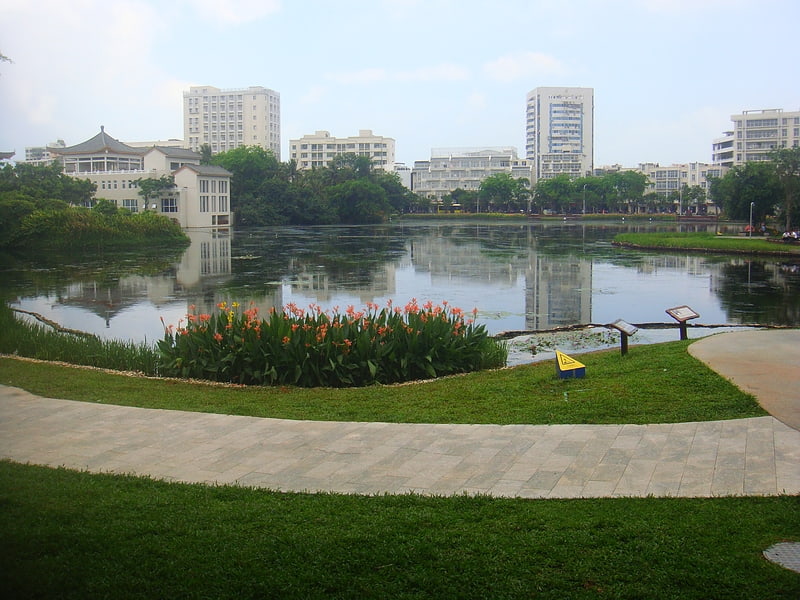
Lake. East Lake Triangle Pool, commonly known as East Lake, is a set of two small lakes in the East Lake area of Haikou, Hainan, China. It is located at the south-west corner of the Bo'ai Road area and at the north side of People's Park.[1]
Evergreen Park
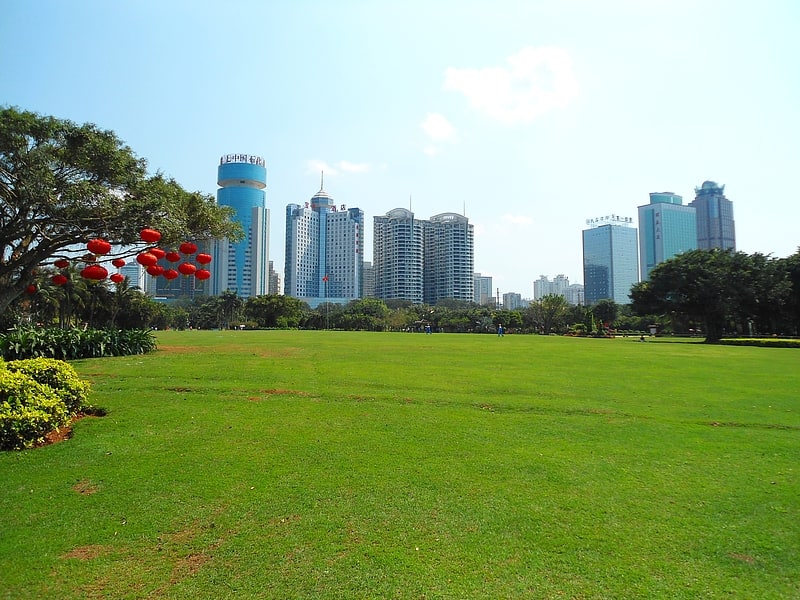
Evergreen Park is a public park located in Longhua District, Haikou, Hainan Province, China. It is the largest park in the city.
It is one of four major parks in Haikou and can be compared to Baishamen Park in that both have large, open, grass areas. The other two, Golden Bull Mountain Ridge Park and Haikou People's Park, have a relatively high percentage of tree cover. Many of the city's festivals and events are held in Evergreen Park.[2]
Address: Binhai Ave, Haikou
Baishamen Park
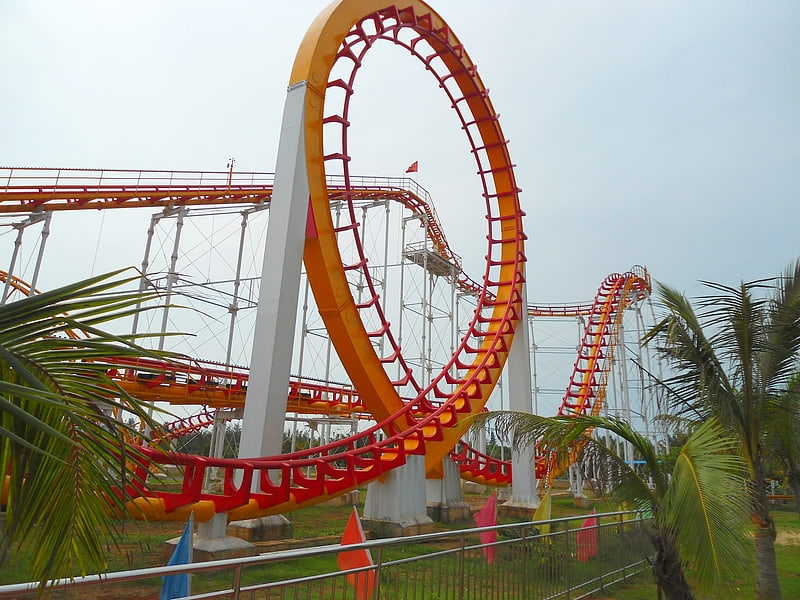
Baishamen Park is a park located in the northern part of Haidian Island, Haikou City, Hainan Province, China.
Opened on January 24, 2009, the park and has a total area of 60 hectares. It contains a small amusement park, and artificial lake. The northern edge is a sandy beach on the Qiongzhou Strait.
It is one of the major parks in Haikou, and can be compared to Evergreen Park, due to its high percentage of grass fields. The other two, Golden Bull Mountain Ridge Park and Haikou People's Park, have a high percentage of tree cover.[3]
People's Park
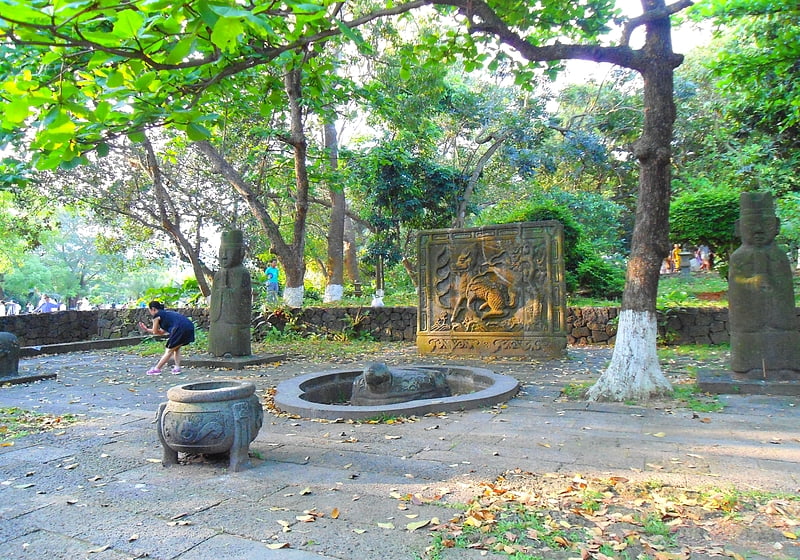
Park in Haikou, China. People's Park is a public park in Haikou, capital of Hainan Province, China. It is located in the centre of the city. It is bordered by Haixiu Road on the south. On northern boundary is Datong Road and East Lake.
Established in 1954, the park covers a total area of over 300 acres. During the late 2000s, it was renovated, with new pathways installed. It is one of four major parks in Haikou, and can be compared to Golden Bull Mountain Ridge Park, due to its high percentage of tree cover. The other two, Baishamen Park and Evergreen Park, consist mostly of open grass fields.
The park comprises a single, large hill, with a plateau at the summit. This landscape feature is unusual in Haikou, as the city is almost entirely flat. Hundreds of winding, narrow pathways are present among a wide variety of flora. Most of the park is covered with a canopy of trees providing mostly shady areas. Compared to other Haikou parks, such as Baishamen Park and Evergreen Park, People's Park is considerably more lush, and contains far more diverse and concentrated flora.
The park, being adjacent to numerous old neighbourhoods, is popular with local Hainan residents, in particular, senior citizens. Each morning, beginning at dawn, thousands of people arrive to partake in exercises. Ad hoc groups form to participate in such activities as badminton, ping pong, tai chi, square dancing, kung fu, jianzi, and aerobics. Tai chi and fitness dancing congregations dominate, with dozens of separate groups present throughout the park. The circular path around the summit plateau is occupied by hundreds of people walking for exercise. No bicycles are allowed in the park, and there is no admission fee.
The park contains many features and amenities, including:
- Ping pong area with several tables
- Public bathrooms
- Convenience store
- Police outpost
- Exercise equipment
- Gateball area
Hongcheng Lake
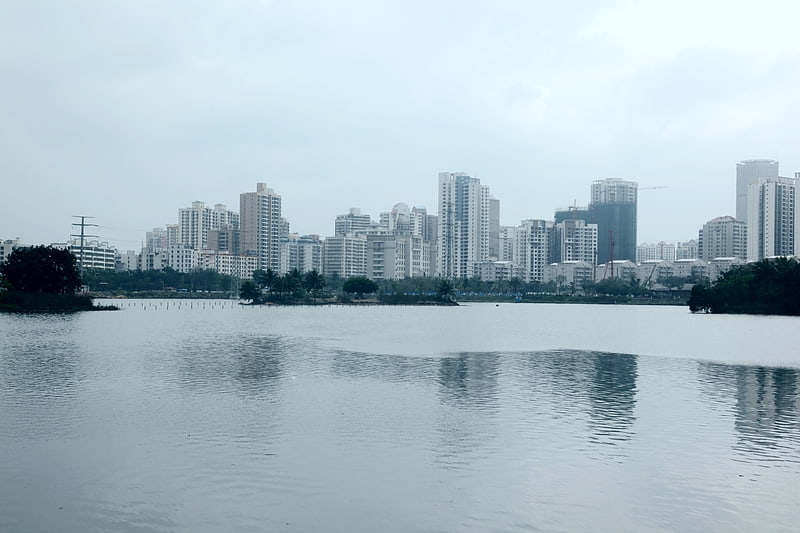
Lake in China. Hongcheng Lake is a lake in Haikou, Hainan, China. It was renovated around 2017 to 2018. It has three islands. Two small, and one, at the west side, is larger with short bridge access and an old, dilapidated building on it.[5]
Haikou Century Bridge
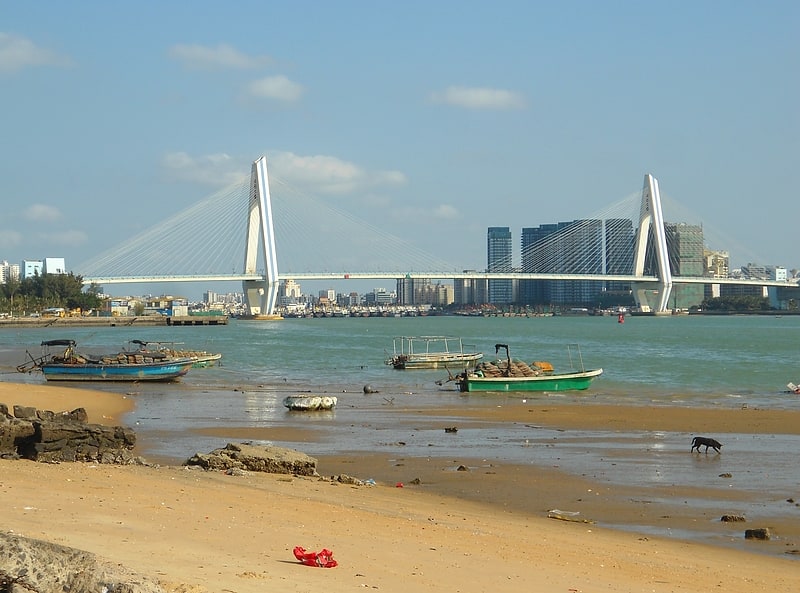
Also known as: 世纪大桥
Cable-stayed bridge in Haikou, China. Haikou Century Bridge is a cable-stayed bridge in Haikou city, the capital of Hainan province.
The bridge was built to link the main part of Haikou city to Haidian Island, a district separated from Hainan Island by the Haidian River. Haikou Century Bridge crosses at the mouth of the river approximately 50 metres west of Haikou New Port.[6]
Hainan Museum

Also known as: 海南省博物馆
Museum in Haikou, China. The Hainan Museum is on Guoxing Avenue, Haikou, the capital city of Hainan Province, China. It was established in 1984, then moved to its permanent location in the Hainan Cultural Park at 68 Guoxing Avenue. There, it was officially reopened on November 15, 2008.
The facility is one of three large public works projects constructed around the same time on Guoxing Avenue alongside one another. The others are Hainan Library and Hainan Centre for the Performing Arts.
Since opening, it has received more than 800,000 visitors, including former leader Hu Jintao and Premier Li Keqiang.[7]
Address: No.68 Guoxing Avenue, Qiongshan District, 570203 Haikou
Haikou Volcanic Cluster Global Geopark
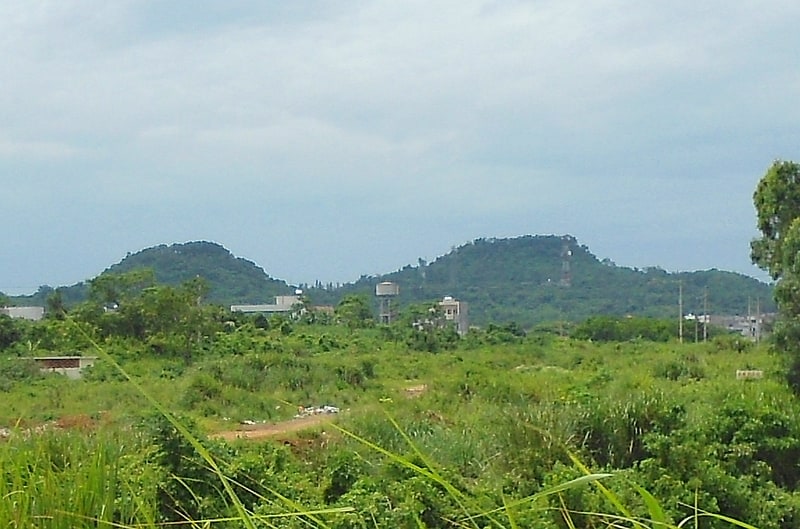
Volcanic field in China. Haikou Volcanic Cluster Global Geopark, also known as Haikou Scenic-Shishan Volcano Cluster, Leiqiong Global Geopark, Haikou Crater Park, and Hainan Crater Park is a national park located approximately 8 mi south of Haikou, Hainan, China. It is named for a crater, one of many extinct volcanoes on the island.
The park has a total area of 118 square kilometres. It contains the two towns Shishan Town and Yongxing Town, and more than 40 Quaternary volcanoes. Part of the area is called Mount Maanling (Saddle) Crater Scenic Area. This area consists of the two major volcanoes, Mount Fengliung (furnace) and Mount Baoziling. Together they appear as a saddle, hence the name. Adjacent to these, there are another two volcanoes, one of which is called Mount Yanjinglin.[8]
Golden Bull Mountain Ridge Park

Golden Bull Mountain Ridge Park is a public park located in Haikou City, Hainan Province, China.
The park is situated in the middle of the city, roughly 100 metres south of Haixiu Road. It has a total size of 102 hectares, and was created in 1996, the same year that Evergreen Park was completed. The most prominent features of the park are a cemetery, a 15.8-hectare lake, a zoo, and numerous, diverse forest areas.
It is one of four major parks in Haikou, and can be compared to Haikou People's Park, due to its high percentage of tree cover. The other two, Baishamen Park and Evergreen Park, consist mostly of open grass fields.
On the plateau at the top of the park is a pigeon aviary and a butterfly garden. About 96% of the park has green cover, much of which is forest area.[9]
Century Park

Park in Haikou, China. Century Park is an 8.40-hectare, public park located downtown Haikou, in the Longhua district of the city, Hainan Province, China. It is located northwest of Binhai Park and east of Evergreen Park. The Haikou Century Bridge travels over part of it.
The park was completed in October 2013 and cost approximately 28.28 million RMB to build.[10]
Baishamen Lighthouse
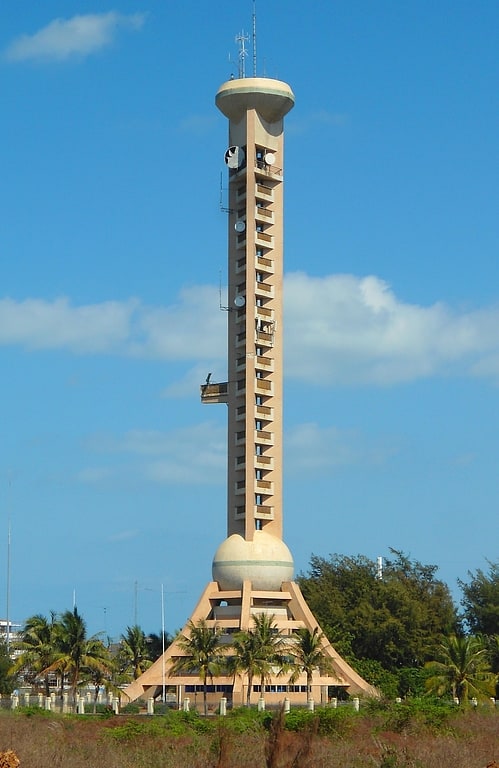
Lighthouse in Haikou, China. Baishamen Lighthouse, located on Haidian Island, Haikou, in the province of Hainan, China, is the sixth tallest lighthouse in the world, and the second tallest in China. Rising from a three-storey hexagonal base, the structure is 236 feet tall. This active lighthouse has a focal plane of 256 feet and sends out a white flash every six seconds. The triangular, cylindrical tower and base are made entirely of white concrete.
It serves as a landfall light for the city of Haikou, and is located on the east side of the entrance to Haikou Bay, the harbor of Haikou on the northeast shore of Haidian Island.[11]
Qiongzhou Bridge
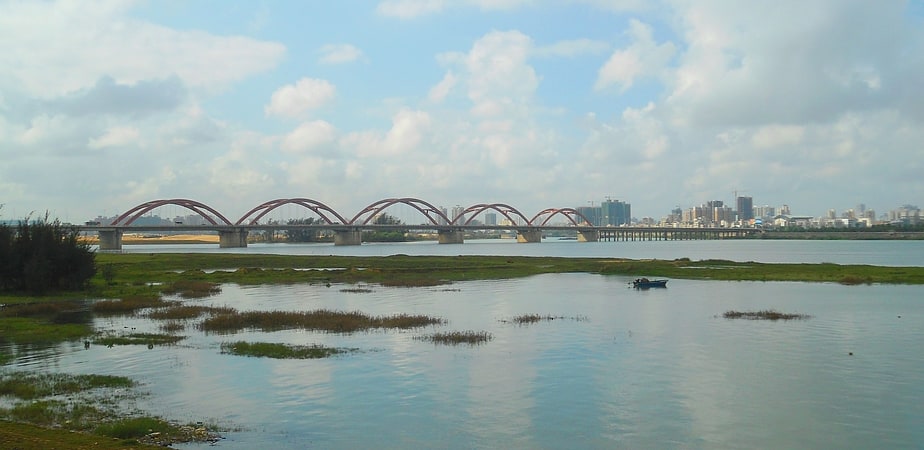
Also known as: 琼州大桥
Tied-arch bridge in Haikou, China. Qiongzhou Bridge, also known as the Nandu Bridge and the Nandu Ninth Bridge, is a bridge that spans the Nandu River, Hainan Province, China. Opened on May 12, 2003, at a cost of 200 million yuan, it serves as the main bridge from Haikou city to Haikou Meilan International Airport. It crosses the Nandu River at the east end of Guoxing Avenue.
The bridge replaces the partially collapsed Nandu River Iron Bridge some 5 kilometers (3.1 mi) away.[12]
Haikou Clock Tower
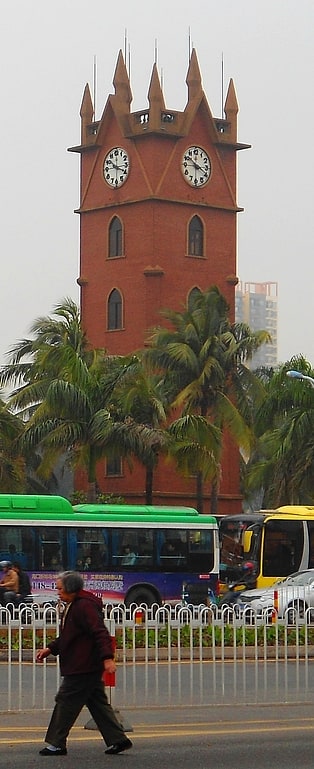
Tower in Haikou, China. The Haikou Clock Tower is a clock tower located on the south side of the Haidian River, at the north end of the Bo'ai Road area, just west of the Renmin Bridge, in Haikou, Hainan, China. It was originally built around 1928-1929, an initiative by then-trade union leader 周成梅. During the Cultural Revolution it was partially destroyed. In 1987, it was rebuilt near its original site to make room for the new, wider road that runs along the river. The present tower is similar to the original, but not an exact replica. It stands 27.3 metres high and is made of red brick in European Gothic style.[13]
Address: Haihou Children's Park, Longhua District, 570102 Haikou
Xiuying Fort

Also known as: 秀英炮台
Tourist attraction in Haikou, China. Xiuying Fort is located in Haikou City, Hainan Province, China. It was constructed in 1890 by the Qing government to counter the threat of the French. It was used to defend against the 1890 invasion by France, and in 1932 against the Japanese during the Cole attack.
It is assigned the designation number 6-1031.[14]
Address: Paotai Road, Xiuying District, 570311 Haikou
Temple of the Five Lords

Also known as: 五公祠
Attraction in Haikou, China. The Temple of the Five Lords, also known as the "Temple of the Five Officials", is a memorial shrine to five exiled officials from the Tang and Song dynasties that is located to the southeast of the city of Haikou on the island of Hainan, China. During the times of these dynasties, Hainan was perceived as a remote part of the empire and was used as a place for banishment for disgraced court officials. All five officials commemorated at the temple encountered such a fate, typically after losing power struggles within the imperial court.
Notable buildings of the temple complex are the Five Lords Ancestral Hall proper, the Guanjia Hall, the Xuepu Hall, the East Hall and West Hall, the Sugong Ancestral Hall, the Ancestral Hall of the Two Fubo Generals, the Bai Pavilion, the Dongzhuo Pavilion, the Suquan Pavilion, the Xixin Hall, and the Youxian Cave.
In total, the temple complex covers an area of 2800 square meters.
The temple's main building is the Five Lords Ancestral Hall. It is a red two-story wooden structure that stands more than 9 m meters tall and has a total floor space of 560 square meters. A historical inscription on a board placed over the front entrance on the second floor declares it the "first building in Hainan". The earliest buildings of the complex were erected during the reign of Wanli Emperor of the Ming Dynasty. The temple has undergone a major restoration during the reign of the Qing emperor Guanggxu followed by minor repairs that were carried out later.
The five officials commemorated in the temple are the Tang chancellor Li Deyu, and the four Song ministers Li Gang, Li Guang, Zhao Ding, and Hu Quan. Each of the officials had been banished to Hainan Province after having fallen out of the court's favor and is now represented by a stone statue placed on the temple grounds.
The Ancestral Hall of the Two Fubo Generals is dedicated to the two generals Lu Bode of the Western Han Dynasty and Ma Yuan of the Eastern Han Dynasty. Both generals played important roles in establishing Chinese rule over Hainan and were recognized by their emperors with the honorary title "Fubo General" for their achievements.
The Sugong Temple is located to the southeast of the Temple of Five Lords. It commemorates Su Shi, a renowned poet and statesman of the Song Dynasty, who was also banished to Hainan.
The temple is located near the administrative border between the City of Haikou and Qiongshan District, about 5 kilometers away from the city center of Haikou.[15]
Haidian Island

Island in China. Haidian Island is an island that forms part of the city of Haikou, Hainan Province, China. It is separated from the main part of Haikou by the Haidian River. The north coast faces the Qiongzhou Strait. The east coast faces Xinbu Island, separated by part of the Nandu River. The west coast faces Haikou Bay.
Both Renmin Avenue and Heping Avenue are the main streets on the island. The former that runs through the middle of the island from the south at the Renmin Bridge to the north shore at the newly built Baishamen Park, which contains an amusement park. Hainan University's main campus is located on the west side of this avenue.
The western part of the island has been expanded as part of a land reclamation project started in the late 2000s.[16]
Nandu River Iron Bridge
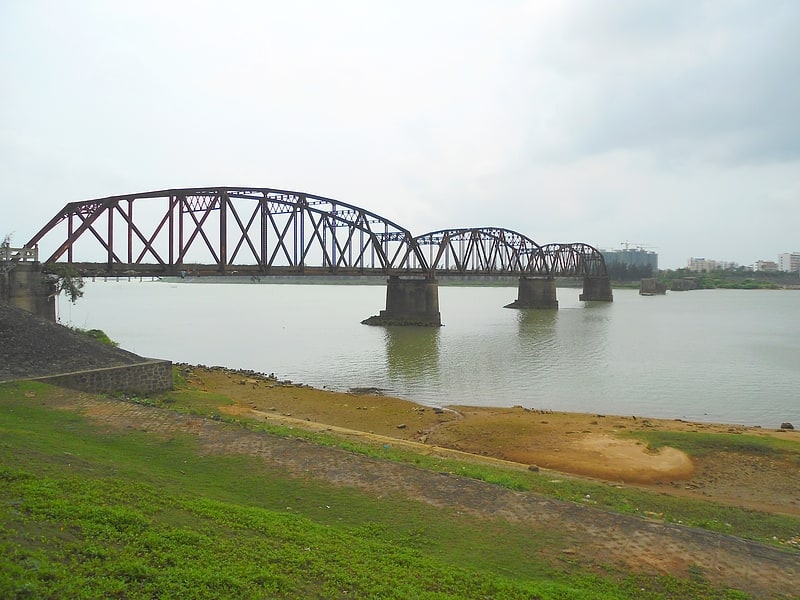
Also known as: 南渡江铁桥
Bridge to nowhere. The Nandu River Iron Bridge, also known as the Devil's Iron Bridge, Old Iron Bridge, and originally the Lu Palace Bridge, is a partially collapsed, steel truss bridge over the Nandu River, in the north of Hainan Province, China. Opened to traffic in 1942, it was Hainan's first bridge over the Nandu River.[17]
Binhai Park
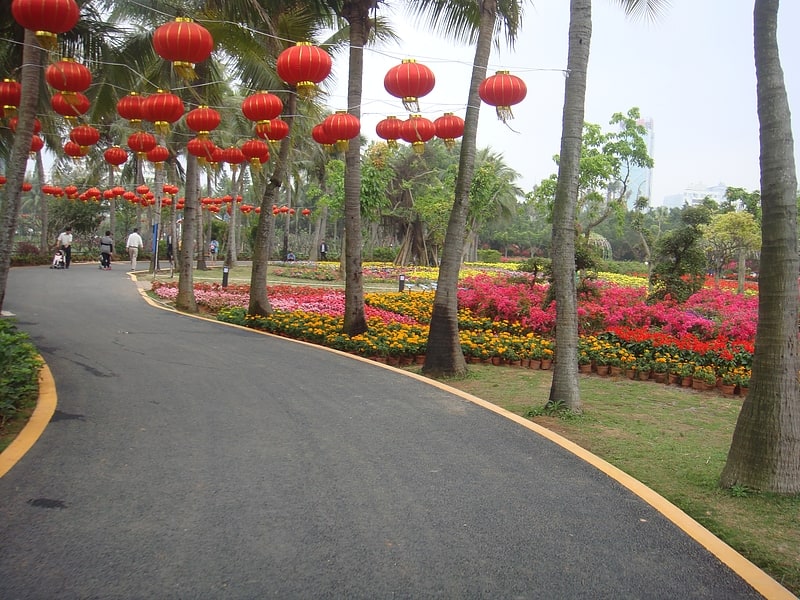
Park in Haikou, China. Binhai Park is an urban park located on the north side of Binhai Road, Haikou City, Hainan Province, China. It was once called Hainan Youth Technology Park.[18]
Hainan Centre for the Performing Arts
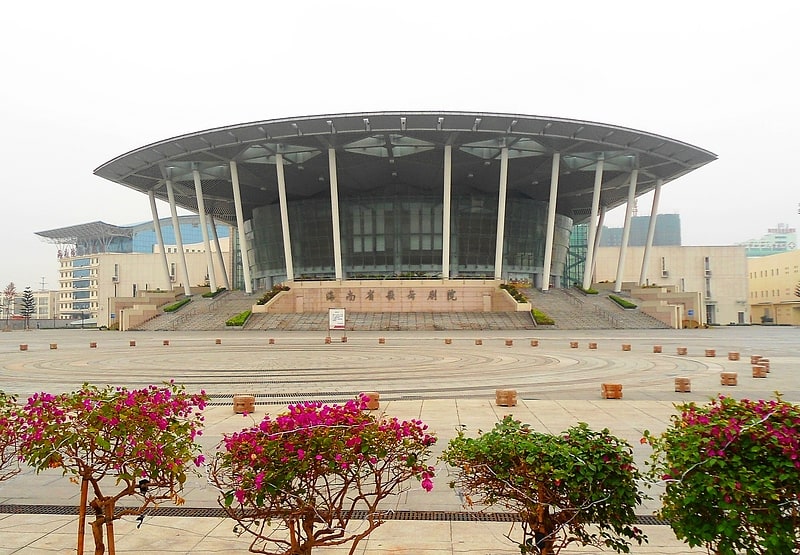
Theatre in Haikou, China. The Hainan Centre for the Performing Arts is located at 68 Guoxing Avenue in Haikou, Hainan, China. The entire facility is 25,000 m2, with an 8,253 m2 auxiliary space, and an actual theatre space of 2,657 m2. The venue can accommodate up to 1,230 people. The cost of construction was 200 million yuan.
The facility is one of three large, cultural infrastructure projects constructed around the same time on Guoxing Avenue alongside one another, the others being Hainan Provincial Museum and Hainan Provincial Library.
In September 2010, the theatre was completed in, and on October 1, 2010, the premiere was held.[19]
Hainan Library
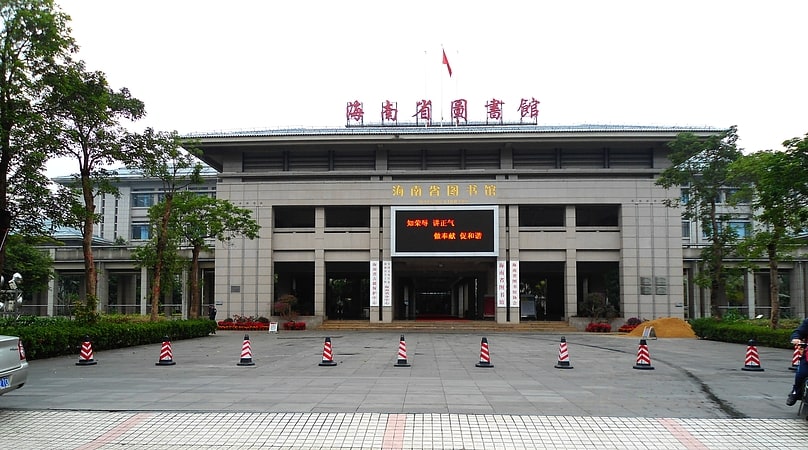
Also known as: 海南省图书馆
Library in Haikou, China. The Hainan Library is located in the Hainan Cultural Park at 36 Guoxing Avenue, Haikou, Hainan, China. It was established on February 2, 2007.
The facility is one of three large, public works projects constructed around the same time on Guoxing Avenue alongside one another, the others being Hainan Museum and Hainan Centre for the Performing Arts.[20]